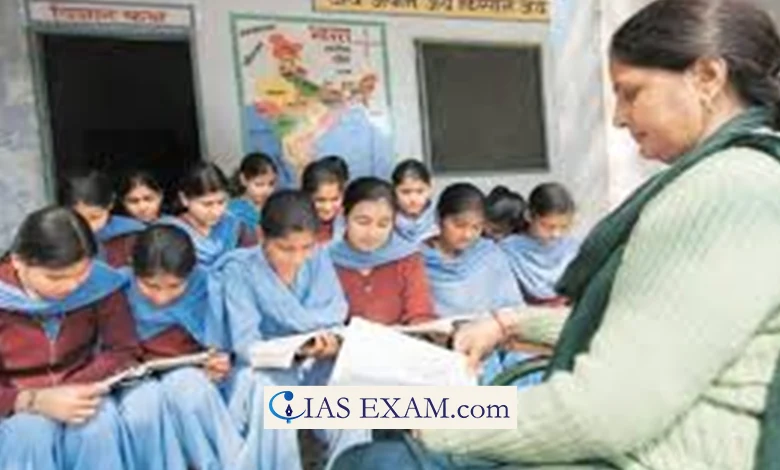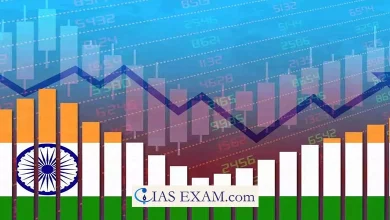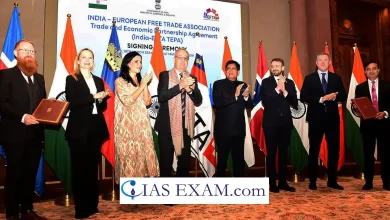Importance of Women Empowerment to unlock India’ Growth
GS Paper 2 - Issues related to Women, Inclusive Growth

Context
As India looks to become a developed nation by 2047, empowerment of women lies at the heart of this challenge. Women-Empowerment and socio-economic development go hand-in-hand as development cannot address gender inequalities. Amartya Sen coined the term “Missing Women” to highlight ongoing gender disparities globally.
With women lagging behind on several parameters of well-being, India must adopt key policies to propel the country towards gender-parity in socio-economic outcomes.
Provisions related to Socio-Economic Empowerment of Women in Constitution
- Article 14 – Guarantees equality before the law and equal protection of the laws, prohibiting discrimination on the basis of sex.
- Article 15(3) – Allows the State to make special provisions for women and children.
- Article 16 – Provides equal opportunities in matters of public employment.
- Article 39(d) – Calls for equal pay for equal work for both men and women.
- Article 42 – Directs the State to make provisions for ensuring just and humane conditions of work and maternity relief.
International Agreement on Women Empowerment
- Convention on the Elimination of All Forms of Discrimination Against Women (CEDAW): Adopted by the UN in 1979, calls for ending discrimination and ensuring equal rights for women. It was signed by India in 1980 and was ratified in 1993.
- Beijing Declaration and Platform for Action: Adopted at the 1995 UN World Conference on Women, it laid out agenda areas for women’s empowerment including economic participation (India is a part of it).
- UN Sustainable Development Goals (SDGs): Goal 5 aims to achieve gender equality and empower all women and girls, including through economic empowerment measures by 2030.
Factors hindering Socio-Economic Growth of Women in India
- Societal Norms – Deep-seated societal norms and patriarchal prejudices frequently limit women’s movement, education, and economic opportunities. In numerous parts of the country, sons are preferred over daughters, and they face prejudice.
- Low Labour Force Participation – India’s female labor force participation rate is relatively low, at roughly 37%, compared to the worldwide average of 47%. In addition, India has a smaller share of paid employees than China and Bangladesh. The transition away from agriculture and the presence of informal labor have disproportionately affected women, with many rural women employed in the informal sector.
- Unequal share of unpaid Care Work – Indian women bear a disproportionately higher burden of unpaid domestic and care work relative to men. This restricts their time available for education, skills development, and paid economic activities. Women spend nearly three times (2.8) as much of their day on unpaid care work as men (UN Women).
- Gender Pay Gaps – In India, there are considerable gender wage gaps across industries and occupations. Women frequently face discrimination in employment, advancement (glass ceiling and glass clip), and pay compared to their male colleagues. In the World Economic Forum’s Global Gender Gap Index 2023, India ranks 127th out of 146 nations, having reduced 64.3% of the overall gender gap.
- Lack of Financial Inclusion – Despite laws giving equal inheritance rights, around 20% of Indian women own land or property. Women’s economic negotiating power and loan access are limited due to a lack of assets. The National Family Health Survey 2019-21 results suggest that males hold more property than women.
- Exposure to Violence – The high incidence of various types of violence against women, including as domestic abuse and sexual harassment, limits their freedom of movement and capacity to engage securely in economic arenas.
Measures to be adopted to promote Socio-Economic Well-being of Women
- Increasing Women’s Labour Force Participation – Raising women’s labor force participation (LFP) rate from the current around 25% to 50% could bring India closer to an 8% GDP growth rate. according to World Bank estimates. The government should focus on increasing manufacturing capacity, particularly in labor-intensive industries like readymade clothes, footwear, and light manufacturing, where women make up a major share of the workforce.
- Improving Access to Skilling – There is tremendous scope to raise the number of training institutes that cater exclusively to women from the current 17% of Industrial Training Institutes (ITIs). Career counseling, job placement cells embedded in training institutes, and harnessing alumni networks to activate women “role models” and mentors for female trainees may be effective tools to improve employment outcomes.
- Developing Micro-Credentialing Platforms – Develop online platforms that provide stackable micro-credentials based on in-demand talents. These bite-sized courses, made possible by Generated AI, may be taken on a flexible timetable, allowing women to obtain important skills without disturbing childcare or job obligations.
- Women-Led Supply Chain Networks – Create government-supported projects that connect women-led self-help groups (SHGs) with big enterprises and government procurement programs. This gives women a consistent market for their products and services, eliminating intermediaries and enhancing profit margins.
Way Forward
Empowering women is not just a moral imperative but also a strategic necessity for India’s socio-economic development. By harnessing the full potential of women, India can unlock new avenues for growth and prosperity. The provisions enshrined in the constitution and international agreements provide a solid foundation for promoting gender equality and women’s empowerment. However, overcoming deep-seated societal norms, increasing women’s labor force participation, and addressing gender disparities in pay and access to financial resources are crucial challenges that need to be addressed. Through concerted efforts and targeted interventions, India can create a more inclusive society where every woman has the opportunity to thrive and contribute to the nation’s progress.
SOURCE: The Indian Express





.png)



